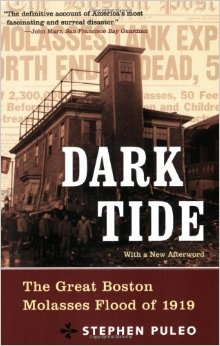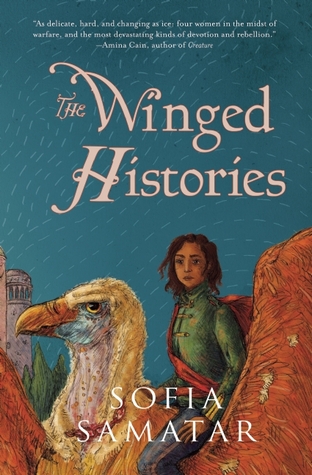I haven’t accomplished much in the last month because the news has had me genuinely stressed out. 2016 has had far too much news, most of it alarming, and I’m trying to back away from following it obsessively. In part that means getting back to writing and drawing, as a distraction. So I finished roughly two thirds of this review in early June and the rest just now; if it seems disjointed, there’s your reason.
Jacqueline Koyanagi’s Ascension, a space opera novel, came out a few years ago. I read it recently, having chosen it at random. It’s not bad. It’s not perfect, either, but it meets and exceeds my baseline criteria for “good.” For about half this post I’ll explain further; then, as is my habit, I’ll use this book review as an excuse to wander off on a tangent: What is starship-crew space opera (of which this is an example) usually doing? Why is it more common in media SF than in print? And what do fans get out of it?
Ascension is narrated in first person by its protagonist, Alana Quick. The prose is good; it’s clear this book has paid some attention to word choice. Like, in this world starship mechanics are called “sky surgeons,” and Alana describes her work as “stitching together humanity’s lifeline.” Which tells you Alana sees ships as living organisms, and thinks of her work less as engineering than as lifesaving medicine. Alana’s complex enough that when she did something crazy impulsive–as she does more than once, because that’s her personality–I never lost patience.
Her first impulsive decision is to stow away on the starship Tangled Axon. She wants a job. More importantly, she wants to know why the crew were hired to deliver her sister to the big Wal-Mart-meets-Google corporation that literally travelled from a parallel universe to dominate the run-down local economy. The Tangled Axon’s crew is not thrilled to find Alana in their hold, but for now they’re stuck with her because shortly thereafter everyone’s framed for blowing up a planet.
Ascension is about a starship crew accepting a new member and might appeal to the same audience that liked the similarly themed The Long Way to a Small, Angry Planet. I don’t think Ascension is as successful a novel because its world doesn’t feel as complete or lived in as The Long Way’s. The Tangled Axon’s crew rarely interact with anyone outside the main cast. Granted, they are fugitives, and their isolation adds extra complications since Alana is chronically ill and running out of medication. But it feels like the characters live in a bubble, or a movie with a limited budget for speaking parts. The one person they seek out for help tidies herself away by dying as soon as she’s told them what they need to know. Even the big villain is, in a sense, part of the family.
Ascension’s universe is a backdrop in front of which the characters work out their relationships. Despite the presence of generic cargo crates I’m not sure I understand how the Tangled Axon earns a living when it’s not having an Adventure. And although Koyanagi tries, the crew don’t seem to react to the destruction of an entire planet with the warranted level of blue-screen-of-death horror. On the other hand, another story with this flaw is the 1977 film Star Wars, which I’ve heard has done well for itself. On the other other hand, having only recently finished Ascension I already cannot recall how destroying a planet fit into the villain’s master plan.
Anyway, that one thematic parallel to The Long Way to a Small, Angry Planet started me thinking about Starship SF, and the kinds of stories it tells. Starship SF is the space opera subgenre that brings together a disparate bunch of characters and watches them mess about in a starship. Starship SF novels exist, including Ascension and The Long Way to a Small, Angry Planet, but the best known examples are TV series–Farscape, Firefly, Red Dwarf, Blake’s 7, Star Trek. These shows like to tell different kinds of stories in their individual episodes. But it’s arguable that their overall series-long stories are, at least in part, about found families or families of choice.
Starships are central to space opera TV shows in a way they usually aren’t in novels; they have a budgetary incentive to set as many scenes as possible on their standing set. (One redemptive reading of Ascension’s lack of interest in the universe beyond the Tangled Axon is that its insularity mirrors Starship SF’s affection for the bottle episode.) A spaceship is a terrarium floating in a void, by necessity an enclosed, self-sufficient world. The crew can’t leave because beyond the walls is airless vacuum–literally nothing. Stick some random people in this situation and it can go one of two ways. One is horror, the breakdown of a miniature society under pressure, as in the movies Alien or Sunshine. The other, more suited to a series, is for the crew to come together as a community. Or a family. Starship crews can be metaphors for either, or both, which is where the consolatory element comes in. These communities, like families of choice, at least aspire to work out their problems and make a safe space for all their members.
I spent the last year re-watching Star Trek: The Next Generation, which I hadn’t seen in ages. Coincidentally the blog Vaka Rangi by Josh Marsfelder reviewed the series episode-by-episode at around the same time, so I followed that as well. Gene Roddenberry thought of ST: TNG as utopian SF: the Federation is a post-scarcity society where nobody’s poor because anyone can get whatever they need from a replicator; everyone values self-improvement over money and status. In his reviews Marsfelder repeatedly suggests that, yeah, ST: TNG is utopian, but it’s not the Federation that’s the utopia–we don’t know how the Federation works[1], and the Enterprise often has to fix situations the Federation’s screwed up. The Next Generation’s utopia is the Enterprise itself, because the crew models better ways to resolve conflicts than the truculent posturing passing for drama in grittier SF. The crew, and whatever guest stars have shown up this week, are stuck with each other. If they can’t keep the Enterprise community functional while they’re between planets… well, leaving is more complicated than opening an airlock and walking away. The characters have their differences but The Next Generation’s focus is on how they work them out and come to understand each other.
In written science fiction space opera and military SF are so closely linked they’re often conflated, but that’s not the path The Next Generation took. Yeah, Starfleet looks like a military organization–they have ranks and uniforms–but it’s unlike any military we know. The characters rarely relate to each other like soldiers in a disciplined chain of command. (The episodes where The Next Generation modeled itself on military drama were usually the ones where the show went off the rails.) The Enterprise feels like an office staffed by close and supportive employees. More than that: the bridge crew relate to each other in a way that feels as close as a family. And they really do appear to be each others’ primary family: Star Trek did not have an unlimited recurring cast, so most of the crew have just one or two literal relatives. The only one with an American-style nuclear family is Chief O’Brien.
Most televised Starship SF resembles ST:TNG in that their long-term emotional arcs are about disparate people forming family-style emotional bonds. Firefly is about people who initially don’t understand each other becoming a family. Farscape is about people who initially don’t understand each other becoming a family. Red Dwarf is, despite Arnold Rimmer’s best efforts, about people who initially don’t understand each other becoming a family. Even the Blake’s 7 crew feels a bit like a family, though they’re a dysfunctional one and the series ends in a messy divorce.
You might, if inclined, divide ensemble TV series into two broad groups: the edgy ones, spectacles of people ingeniously betraying and undercutting each other (A Game of Thrones, Battlestar Galactica, House of Cards), and the consolatory ones whose characters support each other and come together to solve problems. Whether these ensembles are SF like ST:TNG, crime dramas like Leverage, or even sitcoms like The Simpsons or Community, the ways the characters relate to each other feel similar. Their emotional arcs take familiar routes regardless of genre. Either a character is emotionally tied up in the A plot (Worf’s family is caught up in Klingon politics, Starfleet wants to disassemble Data), or the B plot is about someone working through emotional issues that tie into the A plot thematically (Data wants to understand some human foible, Barclay is working on his psychological issues). The rest of the cast help them through their problem to an emotional epiphany.[2] Scenes where Geordi explains humanity to Data or Picard works through an ethical dilemma with Guinan aren’t all that different in function from the part of a Simpsons episode where Marge Simpson inspires Homer to briefly locate his better side. You could drop the characters from another ensemble show (maybe not The Simpsons, but certainly Community or Leverage) into a Star Trek show and the usual styles of Star Trek stories would still make sense in a way they would not make sense with, say, the characters from A Game of Thrones.
It’s significant that which plot is the A plot and which is the B plot is not always clear. On Star Trek shows–Voyager in particular–it isn’t unusual for an episode’s external threat to be a vague pseudoscientific problem resolved through perfunctory technobabble, with more running time spent on the character interactions that, structurally, might be some other show’s B plot.
Literary space opera usually doesn’t work like Starship SF TV shows; most starship-heavy novels are Military SF, or thrillers. Maybe that’s because a novel is, like a movie, a one-off event; even if it’s part of a series you’ll probably have to wait a year for the next volume. Starship SF audiences aren’t into plot so much as regular contact with their favorite characters. They want to see what the gang is up to this week.
Not that space opera fans don’t enjoy suspenseful action, special effects spectacle, and clever problem-solving, but in these series the chance to watch allies or co-workers becoming friends and friends becoming family is an important attraction. Starship SF is consolatory and aspirational, and I mean that in a positive sense. There’s a certain escapist pleasure in just watching a bunch of friends hang out.[3] To that extent, most of SF fandom’s favorite shows push the same emotional buttons for their fans as a show like Friends does for its audience. Mind you, I’m not saying Star Trek and Friends are interchangeable. The stories and themes they explore in addition to the weekly dose of camaraderie are different, and have different functions; if that weren’t true, they wouldn’t have different audiences. But they do both have that weekly dose of camaraderie, and it’s a point where their audiences have something in common. SF fans who write fan fiction love having their favorite characters just plotlessly hang out together; there’s even an entire subgenre transplanting characters from different settings into 21st century coffee shops.
I’ve wandered far from my original point here. But I think Ascension would appeal to the audience I’ve just described, who might find the characters’ non-involvement in the outside world to be as much a feature as a bug. Sometimes insularity is privilege or self-absorption. But sometimes it’s just that the outside world is the B plot.
-
This vagueness makes the Federation more convincingly utopian–the more details you give about a utopia, the more likely it is that the audience will decide some of those details don’t sound all that great. ↩
-
On ST:TNG helping resolve emotional arcs was literally Troi’s job, which just makes it weirder that the writers so often had no idea what to do with her. ↩
-
Or even just watching the extras: when I rewatched ST:TNG one of my favorite parts was watching the people in the background, who were more visible now that I wasn’t watching on a 19-inch screen with bad reception. ↩


